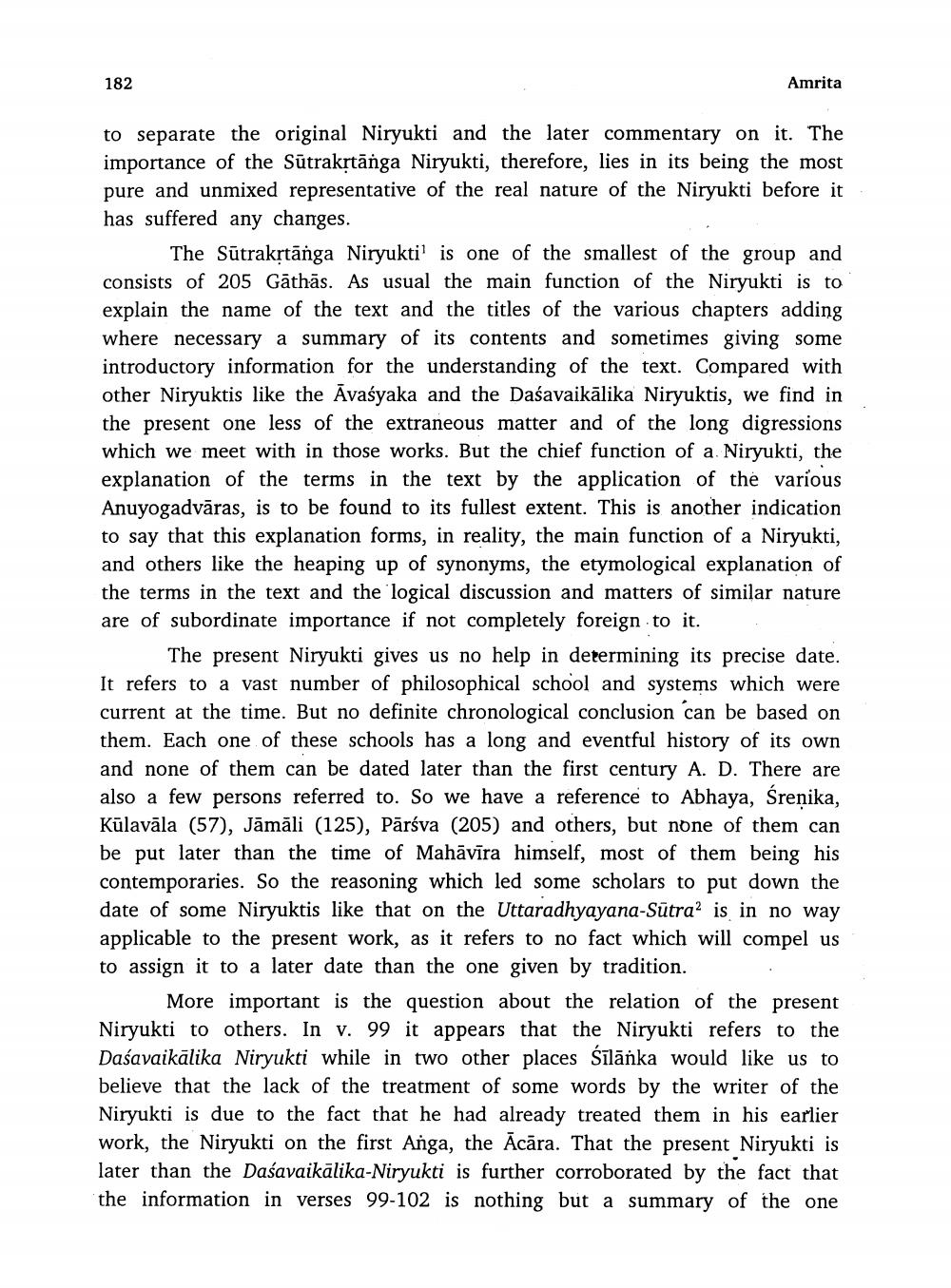________________
182
Amrita
to separate the original Niryukti and the later commentary on it. The importance of the Sūtrakṛtānga Niryukti, therefore, lies in its being the most pure and unmixed representative of the real nature of the Niryukti before it has suffered any changes.
The Sūtrakṛtānga Niryukti' is one of the smallest of the group and consists of 205 Gāthās. As usual the main function of the Niryukti is to explain the name of the text and the titles of the various chapters adding where necessary a summary of its contents and sometimes giving some introductory information for the understanding of the text. Compared with other Niryuktis like the Avaśyaka and the Daśavaikälika Niryuktis, we find in the present one less of the extraneous matter and of the long digressions which we meet with in those works. But the chief function of a Niryukti, the explanation of the terms in the text by the application of the various Anuyogadvāras, is to be found to its fullest extent. This is another indication to say that this explanation forms, in reality, the main function of a Niryukti, and others like the heaping up of synonyms, the etymological explanation of the terms in the text and the logical discussion and matters of similar nature are of subordinate importance if not completely foreign to it.
The present Niryukti gives us no help in determining its precise date. It refers to a vast number of philosophical school and systems which were current at the time. But no definite chronological conclusion can be based on them. Each one of these schools has a long and eventful history of its own and none of them can be dated later than the first century A. D. There are also a few persons referred to. So we have a reference to Abhaya, Śrenika, Kūlavāla (57), Jāmāli (125), Pārsva (205) and others, but none of them can be put later than the time of Mahävira himself, most of them being his contemporaries. So the reasoning which led some scholars to put down the date of some Niryuktis like that on the Uttaradhyayana-Sutra is in no way applicable to the present work, as it refers to no fact which will compel us to assign it to a later date than the one given by tradition.
More important is the question about the relation of the present Niryukti to others. In v. 99 it appears that the Niryukti refers to the Daśavaikālika Niryukti while in two other places Silänka would like us to believe that the lack of the treatment of some words by the writer of the Niryukti is due to the fact that he had already treated them in his earlier work, the Niryukti on the first Anga, the Acãra. That the present Niryukti is later than the Daśavaikālika-Niryukti is further corroborated by the fact that the information in verses 99-102 is nothing but a summary of the one




